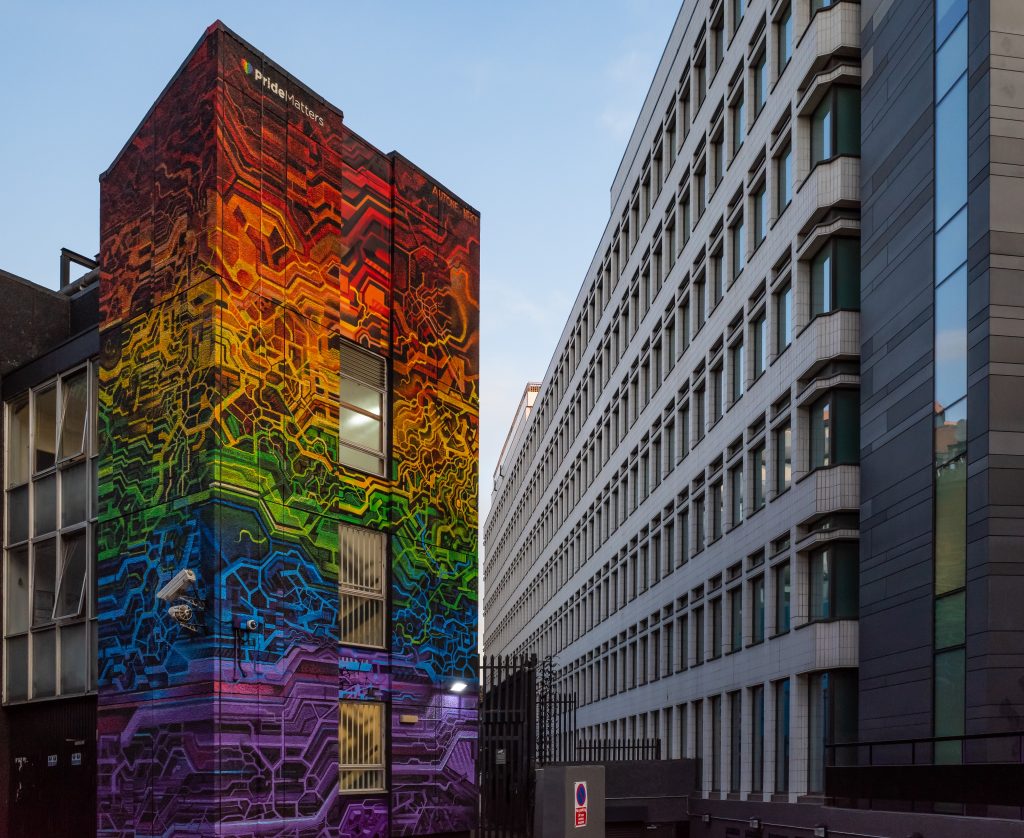Part 2 of the Equality Act 2010 introduced the concept of protected characteristics, which shield individuals from discrimination and inherent disadvantages. Examples of protected characteristics can include age, disability, gender identity, sexual orientation and religion or belief. The implications of the Act caused businesses to incur new responsibilities, such as demonstrating effective measures for anti-discrimination and providing equal opportunities during the recruitment process and employment.
Equally, public authorities are required to consider discrimination and the needs of disadvantaged groups during decision-making processes about providing services and implementing new policies. This is reflected within tender opportunities and questions set by purchasing authorities.
Equality, diversity and LGBTQIA+ tender opportunities
As part of an increased awareness of the importance of equality and diversity in providing services to all aspects of the population, public and private sector buyers have been tailoring services directly to individuals within marginalised or protected groups. As an example, the following opportunities are just a few that have been posted on the government’s Contracts Finder website within the past 12 months:
- LGBTQIA+ support services for members of the community aged 13 or older within Scotland
- Civic leadership programme to support and develop community-driven solutions in health, education, policing and crime in London Borough of SouthwarkNHS Rainbow Badge Phase II Project which deploys and develops a staff-driven scheme to provide gender and sexuality support for patients visiting relevant NHS Trusts
- LGBTQIA+ independent domestic abuse services providing a short-term advocacy service within Torbay Council
- Ethnic minority health improvement and inequalities programme to improve mental health and wellbeing in Wirral Borough Council.
The opportunities and proposed services are designed based on detailed research to improve outcomes, reduce inequality and provide support for those most in need. For example, the charity Safe Lives details how LGBTQIA+ individuals are twice as likely to have experienced abuse from a family member. Furthermore, a report from the Local Government Association outlines how some ethnic minority groups have higher incidences of long-term illness and poor health. To combat these disparities and disadvantages, authorities may continue to roll out similar programmes to increase equality, leading to sustained tendering opportunities (particularly those in the field of health and social care).
Examples of equality and diversity in tender questions
Buyers are also creating question sets with a greater focus on how tenderers integrate equality and diversity into all aspects of working practices. According to the Office of National Statistics, 3.8% of the UK population in 2020 identified as LGBTQIA+ and 18.3% as belonging to a minority ethnic group. This requires a culturally sensitive approach to delivering works and services and enhanced awareness of equality and diversity for all.
Over the past 12 months, our writers have completed the following questions around equality and diversity on behalf of our clients:
| Industry | Question text |
| Security | “Please explain how you would raise equality and diversity awareness in relation to this contract.” |
| Health and social care | “Please detail your organisation’s understanding of the borough’s population needs profile and geographic makeup [and] how your service would respond to protected characteristics of service users.” |
| Void refurbishment | “Do you proactively manage Equality, Diversity and Inclusion within your organisation? If ‘Yes’ please provide evidence of proactive management and measurement activities.” |
| Facilities management and maintenance | “Does your company/organisation have a staff equality and diversity learning and development programme? If yes, please provide details.” |
As evidenced, the purpose of these questions is to determine prospective suppliers’ organisational approach to equality and diversity, as well as how they will deliver a service that adapts to the needs of a diverse base of customers, residents or service users. Moreover, the varied list of industries demonstrates that equality- and diversity-based questions are not restricted to certain sectors, such as health and social care, but an important element of wider procurement policy.
Responding to evolving focuses
As with other questions, bidders will require specific and well-evidenced examples of their equality and diversity measures, inclusive of statistics and initiatives, in order to achieve high marks from evaluators. When drafting responses to questions around equality and diversity, you should incorporate your current and future commitments, achievements and outcomes, such as:
- Demonstrating your research into the local area or authority’s administrative boundaries, understanding the unique composition of the population and their requirements
- Working methods for promoting inclusivity, such as being conscious of religious holidays and prayer schedules, such as reciting the Divine Office or Salah, when scheduling works or booking appointments
- How your organisation supports employees with protected characteristics to remain in work and achieve their full potential, evidenced by staff feedback and retention rates.
Furthermore, it is not enough to simply describe equality and diversity achievements within your working practices; you also need to implement active methods for achieving workplace parity and an inclusive service. As part of best practice measures, consider the following:
- Reviewing and updating organisational policies, including customer care policies, to reflect how your organisation adapts to diverse needs, such as LGBTQIA+ individuals
- Undertaking periodic reviews of equality and diversity measures to evidence fair recruitment methods, employment practices and progress towards eliminating any pay gaps
- Delivering additional equality and diversity training for all employees on how to facilitate a safe and productive working environment for colleagues and members of the public with protected characteristics.
As a starting point, this will enable you to evidence the measures you take to drive an inclusive, open and diverse workplace.
Since our formation in 2009, Executive Compass has supported with over 7,000 SQ and ITT submissions, which have resulted in a fully auditable 85% success rate for our clients. To find out more on how we can support you with an opportunity through our comprehensive bid and tender services, contact a member of our sales and marketing team today at 0800 612 5563 or via email info@executivecompass.co.uk.
